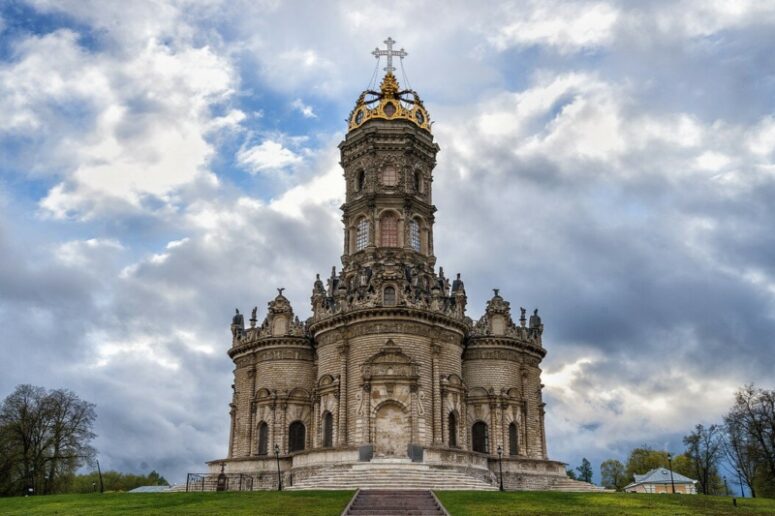
What is our idea of an Orthodox church? Today, we might visualise it as a building or rock and mortar, painted in white or some other liturgical colour, with a rounded roof and a cross on its summit. Alternatively, we could imagine it as a small rural temple built from wood with a dome and a cross. But there is a lot more variety in church architecture. The faithful have gathered for communal prayers in catacombs, private homes and many other surroundings. Accordingly, Christian churches in Russia have taken multiple forms, including some quite extraordinary ones. Here are some examples.
Rock-hewn churches
Of all the samples of Russia’s vernacular church architecture, rock-hewn churches are perhaps the best known. Churches and monasteries carved into rock were a widespread architectural solution. It provided secrecy and seclusion, especially prized by the faithful fleeing religious persecution. Numerous examples exist across Montenegro, Bulgaria, Turkey, Georgia and Crimea. In southwestern Russia, several monasteries were carved into limestone in the 18th and 19th centuries. All have survived to our time. Interestingly, these cave monasteries were not built by monks but by pious Christians seeking solitary life and prayer. In the limestone caves of Russia’s Voronezh Region, three monasteries are still active: Kostomarovsky Spassky; Divnogorsk Monastery of the Holy Dormition; and Monastery of the Holy Resurrection in Belgorod.
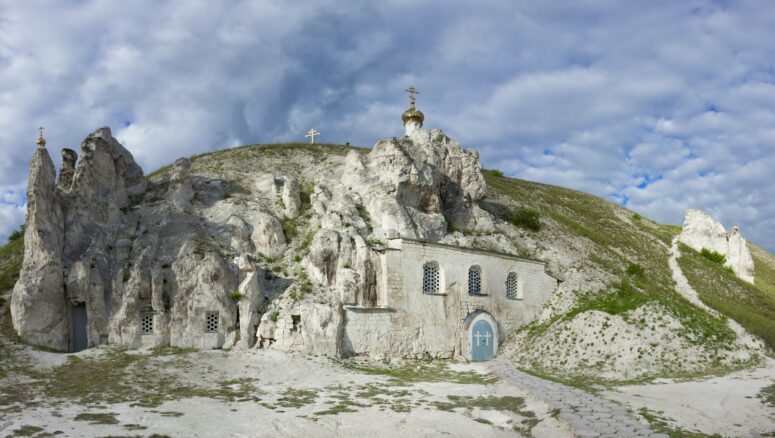

These examples challenge our conventional wisdom on architecture, church or secular. Some structures consist of just one outer wall, and the inner decor almost always depends on the shape of the interior. Sometimes, however, the best architects made the interior design almost indistinguishable from a conventional church.

Custom-built churches
Individually commissioned churches present some interesting and even extraordinary examples of ecclesiastical architecture. First among them is the Church of the Holy Trinity “Kulich and Pascha” in St. Petersburg. The source of its nickname were not the witty townsfolk, but the wishes of the client, Procurator-General Vyazemsky, a confidante of Empress Catherine the Great. In 1785, he commissioned a church and belltower shaped like the famous Easter treats. The tower with the columns – looking like a Kulich – is still an active church. Its annexe, resembling the round-shaped paschal bread, has two tiers. The upper tier is a belfry, and the lower tier accommodates the baptismal font. On the outer wall of the belfry above the bells are two clocks dials, each showing a different time. Apple-shaped roofs and crosses crown both parts of the temple.
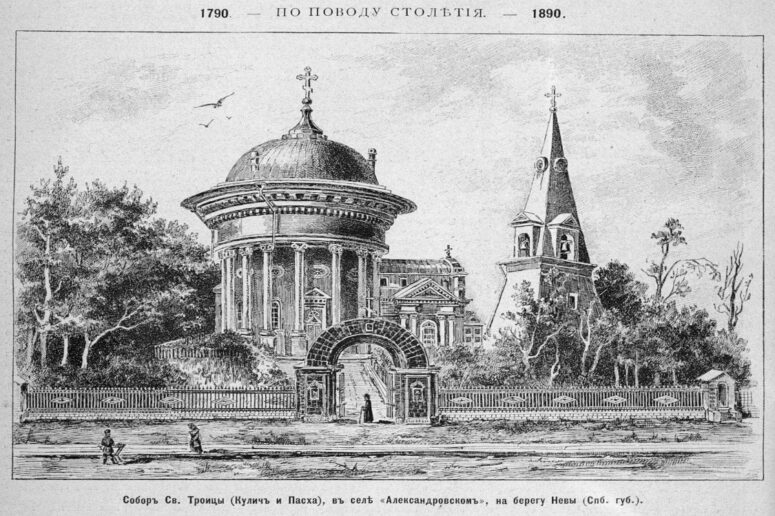

Optical effects and the blue colour of the walls make the interior of the church seem larger than its exterior.

Church of the Icon of the Most-Holy Theotokos of the Sign in Dubrovitsy. This church – located in Dubrovitsy Village outside Podolsk, Russia – looks more like an ancient European Catholic cathedral than an Orthodox church. It dates back to the late 17th century when the estate of Dubrovitsy belonged to Prince Boris Golitsyn, a teacher of Peter the Great. Golitsyn built the temple in the place of a small wooden church dedicated to Elijah the Prophet. According to a legend, he was trying to make peace with Peter the Great after a heated argument. The Tsar attended the consecration in 1704, accompanied by his son, Tsarevich Alexei.
It was a rare example of Rococo style, decorated with stucco and rich ornamentation on the porch, and exquisite vine-shaped scrolls framing the windows. Inside were a richly engraved rock altar and sculptures of Basil the Great, Gregory the Theologian, and the twelve apostles, among others. However, its most distinctive feature was perhaps the gilded roof shaped as a crown. In Russia, it was the only church of its kind.
The church has not survived to our time in its original form. The Soviet authorities closed it down. They blew up the bell tower and the Church of St. Adrian and St. Natalia inside.
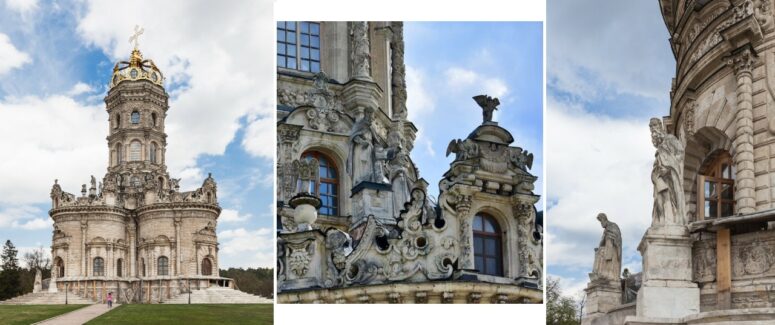

Converted Orthodox churches
Some churches originally belonged to other Christian confessions but eventually became Orthodox churches. They still host worship services, even though their outer look may confuse some believers. The Church of the Assumption of the Blessed Virgin Mary in Sarja, Belarus, was commissioned by Ignatius Lopatinsky, a 19th-century nobleman and built as a neo-Gothic Catholic temple in memory of his departed wife. However, he had not obtained all the required permits and was taken to court in Saint Petersburg.
Ultimately, Lopatinsky had to choose between demolishing the church at his own expense or handing it over to the Orthodox Church. Ignatius selected the latter.
In Soviet times, the church was turned into a warehouse, and nearly became a dance floor in the 1980s. But the Lord protected the church from further desecration, and eventually, the authorities returned it to the faithful. It is now an active Church attended by Orthodox believers.

The Church of St. Barbara in Rayets, Belarus. Here is another example of a Gothic-style church built in the 19th century as a Catholic cathedral and converted into an Orthodox church. With its thick mortar walls, arrow-shaped windows and crenellated roof, it resembles a medieval castle. The tower looks more like a medieval castle. Before commissioning the Church, Francis Rayetsky sent his architect Jan Zajko to St. Helena Island to inspect its churches and draw inspiration from their design. Yet, after the defeat of the anti-Russian uprising of Konstanty Kalinowski in the 1860s, the cathedral lost some of its architectural details and became an Orthodox church. During World War 2, it was hit by a shell, and the Soviet authorities attempted to destroy it after the war. Yet its strong walls have survived all attempts and continue to adorn the local landscape to this day.
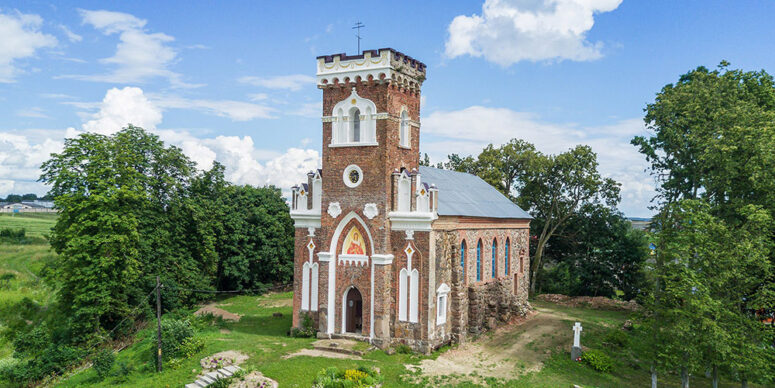
Mobile churches, or temples on wheels
Mobile churches have existed in Russia since 1724, and are still active today. Intense railway construction in 19th-century Russia gave rise to churches converted from railway wagons. Examples still exist today. Travelling wagon churches help reach believers in the most remote areas with no permanent churches. For example, the mobile church of Saint Nicholas the Wonderworker has been travelling for many years around Russia’s Novosibirsk Region. It can accommodate up to 70 believers at a time. Other Russian regions also use mobile churches travelling on railway tracks. Some of these mobile churches have been taken off the tracks, put on a permanent foundation and turned into regular parish churches.

Perhaps the most famous example of a railway wagon-turned-church is the Church of the Reigning Icon of the Mother of God in Nizhny Novgorod. In 2005, the local railway donated to the Church an unutilised railway wagon, and the diocese authorities decided to use it as a makeshift church pending the completion of a permanent church of brick and mortar nearby. A dome was built over its roof and a staircase was added to its door. It was decided to use the wagon as an auxiliary building upon completion of the permanent church.
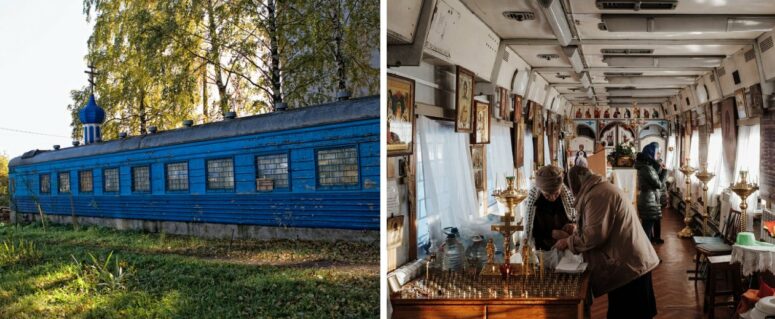
An orthodox church is the house of God. Here, we find salvation by rising above the world and reaching out to Heaven. Details of the outer and inner decor remind us about this goal. Yet sometimes, we need to use creativity to establish places of worship in some less conventional surroundings like a railway wagon or a cave. We believe in the omnipresence of our Lord, and we know that He will hear our sincere prayers wherever we may gather, regardless of the architectural style of our church, be it a former Catholic cathedral, or a church with a crown-shaped roof.

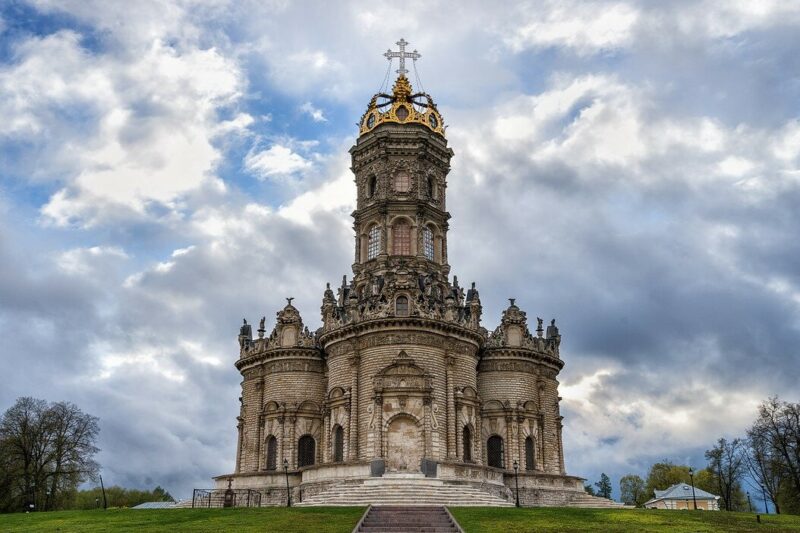



What a wonderful article, thank you Anastasia, very interesting, what a variety of churches. The rococco one is mind-blowing, it must have been stunning when first completed. At least we are privileged to have glimpses of its exquisite beauty. Contrasting it with the cave churches makes one remember how important lt is to be humble, and perhaps the better place to think about that and pray for our souls.
Great article! There’s a Serbian Orthodox Church, among others, buried in rock at the opal minig settlement of Coober Pedy in Australia.
https://www.cooberpedy.com/underground-churches/